DVD: De Palma | reviews, news & interviews
DVD: De Palma
DVD: De Palma
We take a long look at the lurid, brilliant Movie Brat
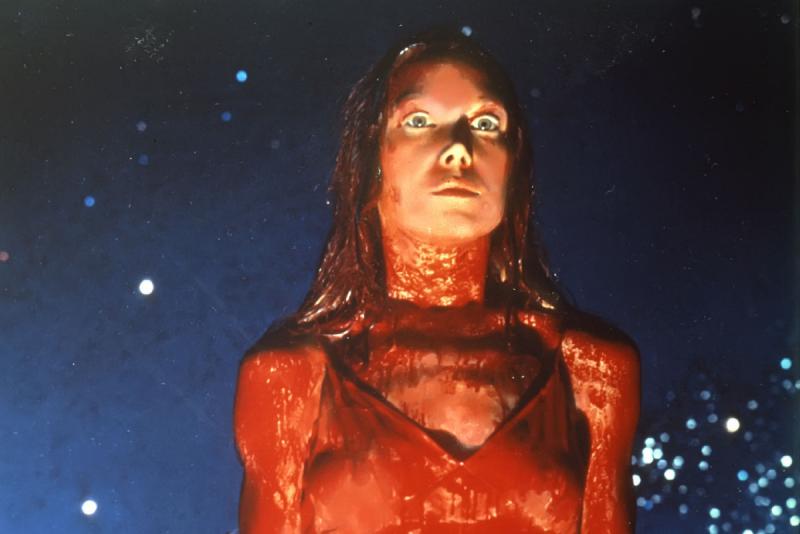
When Carrie White’s hand jumps out of the grave to drag Amy Irving’s character to hell, the shock is Psycho-intense.
Among the Movie Brats who marvellously came of age in the Seventies, and are now mostly in their seventies – Coppola, Spielberg, Scorsese, Lucas – De Palma, pictured below filming Scarface, is still the sensational, lurid outsider. His few big hits in a prolific career – Carrie (1976), Dressed to Kill (1980), The Untouchables (1987), Mission: Impossible (1996) – were unstable one-offs, interspersed with wild darts towards the seedy (Body Double) and wacky (Wise Guys), or failed grasps for profundity and respect (Casualties of War, The Bonfire of the Vanities, Redacted). It has been a chaotic, Jeckyll-and-Hyde professional journey. But De Palma’s enraptured relationship with the camera has remained faithful.
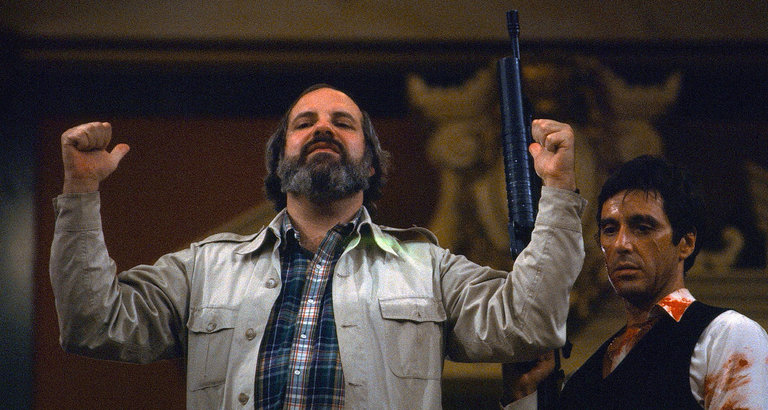 Noah Baumbach and Jake Paltrow’s documentary, De Palma, begins with that affair’s primal scene, Hitchcock’s Vertigo, watched by 18-year-old Brian on its 1958 release. He remembers it as both magically transfixing and hermetically cinematic: a film about the director’s spell, and the violent impulses that can contain, as James Stewart and Kim Novak’s characters are devastated by Hitchcock.
Noah Baumbach and Jake Paltrow’s documentary, De Palma, begins with that affair’s primal scene, Hitchcock’s Vertigo, watched by 18-year-old Brian on its 1958 release. He remembers it as both magically transfixing and hermetically cinematic: a film about the director’s spell, and the violent impulses that can contain, as James Stewart and Kim Novak’s characters are devastated by Hitchcock.
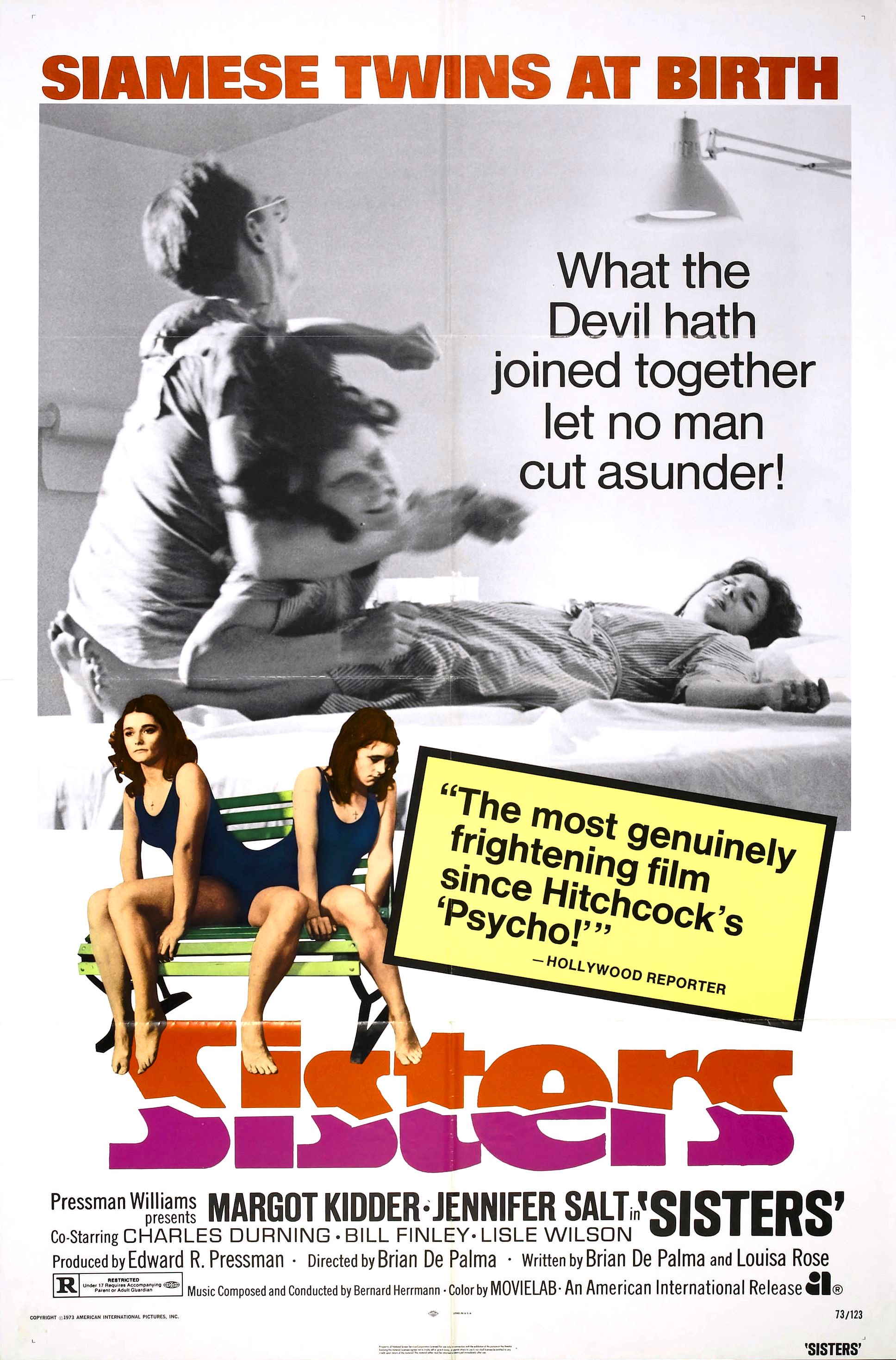 De Palma now likes to think of himself as “the last practitioner of Hitchcock’s language”. He wasn’t alone in the Seventies, with films such as Jonathan Demme’s Last Embrace (1979) almost equalling De Palma’s reputation-making homages Sisters (1973) and Obsession (1976) in updating Hitch’s fatalistic grip, while his near-peer Spielberg retained the knack when a child skips towards a time-bomb in Munich (2005). De Palma is now unique in the monomaniac complexity and sadistic success of his set-pieces, often using split-screen to ramp up the Rear Window-riffing, helpless voyeurism as murder or mayhem plays out.
De Palma now likes to think of himself as “the last practitioner of Hitchcock’s language”. He wasn’t alone in the Seventies, with films such as Jonathan Demme’s Last Embrace (1979) almost equalling De Palma’s reputation-making homages Sisters (1973) and Obsession (1976) in updating Hitch’s fatalistic grip, while his near-peer Spielberg retained the knack when a child skips towards a time-bomb in Munich (2005). De Palma is now unique in the monomaniac complexity and sadistic success of his set-pieces, often using split-screen to ramp up the Rear Window-riffing, helpless voyeurism as murder or mayhem plays out.
He presents this as a dispassionate exercise. “I did grow up in an operating room,” this surgeon’s son notes of his blood-drenched cinema. He’s “a big-brain, science kind of guy”, one of his actors, Gregg Henry, has noted; his schoolboy science projects were brilliant, and on-set he can be coldly uncommunicative, so precise in his plans that nothing more need be said. With the aid of romantically passionate composers such as Bernard Hermann and Pino Donaggio, scenes such as Carrie’s pig-blood-drenched Prom Night, Pacino’s flight from fellow gangsters through the New York subway in Carlito’s Way, the shoot-out around a pram’s Odessa Steps-style descent in The Untouchables, or Tom Cruise catching his own sweat-drop above a motion-sensitive vault’s floor in Mission: Impossible, then often become thunderously, operatically intense.
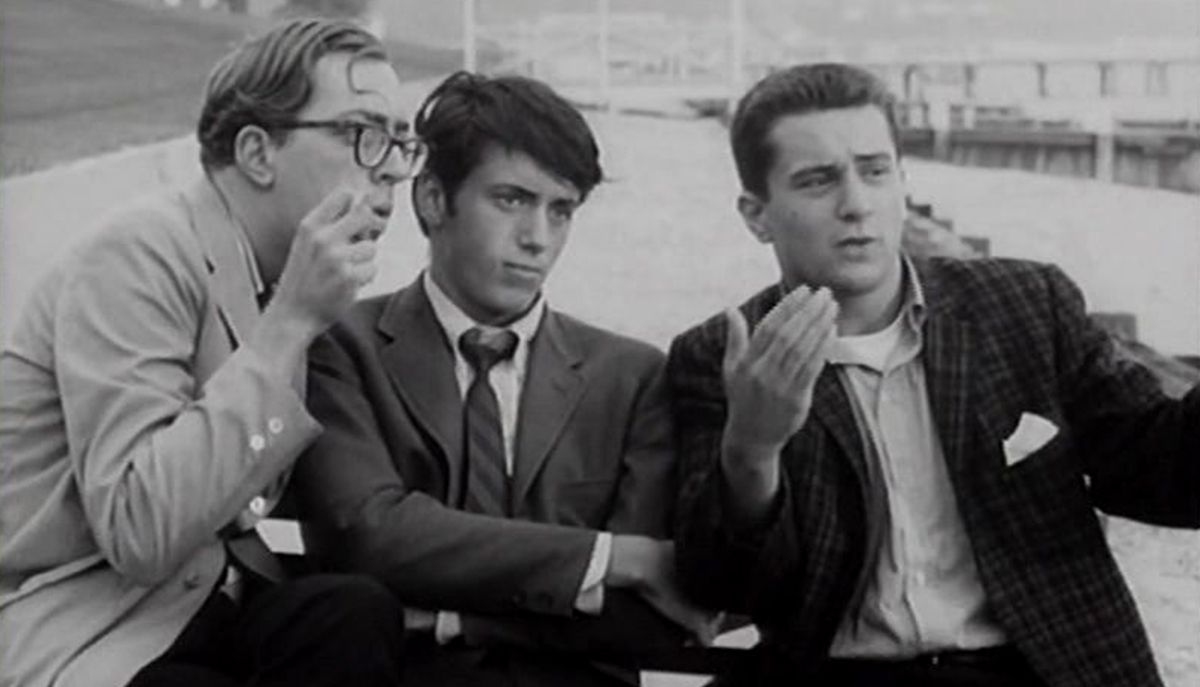 De Palma also takes tantalising inventory of the fact that Carrie was the director’s tenth film. His career began in the Sixties underground, with an initially chubby, crew-cut, charismatic young Bobby De Niro, pictured above right in The Wedding Party, as his star of choice, before Scorsese got him. De Palma’s early, funny ones, micro-budget, anti-Establishment and anarchic in the era of the Vietnam draft, help explain his scattershot, unsatisfied Hollywood career (he now works in France). The comedies’ glee with newly possible nudity continued into his thrillers, in which women have been stalked, slashed and drilled while, for Body Double, he outraged Hollywood’s caste system by test-screening a porn star. He still dismisses feminism as “the critical fashion of the day”, declaring once again here, unabashed: “I love photographing women…I love to follow them.”
De Palma also takes tantalising inventory of the fact that Carrie was the director’s tenth film. His career began in the Sixties underground, with an initially chubby, crew-cut, charismatic young Bobby De Niro, pictured above right in The Wedding Party, as his star of choice, before Scorsese got him. De Palma’s early, funny ones, micro-budget, anti-Establishment and anarchic in the era of the Vietnam draft, help explain his scattershot, unsatisfied Hollywood career (he now works in France). The comedies’ glee with newly possible nudity continued into his thrillers, in which women have been stalked, slashed and drilled while, for Body Double, he outraged Hollywood’s caste system by test-screening a porn star. He still dismisses feminism as “the critical fashion of the day”, declaring once again here, unabashed: “I love photographing women…I love to follow them.”
De Palma began as an informal record of the entertaining Hollywood yarns its subject told his younger director friends Baumbach and Paltrow, which they catch for posterity with an ironically static camera. His relaxed relish makes a change from his usual social discomfort, caught by Julie Salamon in her book on The Bonfire of the Vanities’ disastrous making, The Devil’s Candy: “When he remembered to be polite, the words sounded awkward, as though he were lip-synching phrases from a foreign language.” Though self-deprecating in tone, the documentary’s unchallenged stories settle scores, and mostly prove him right.
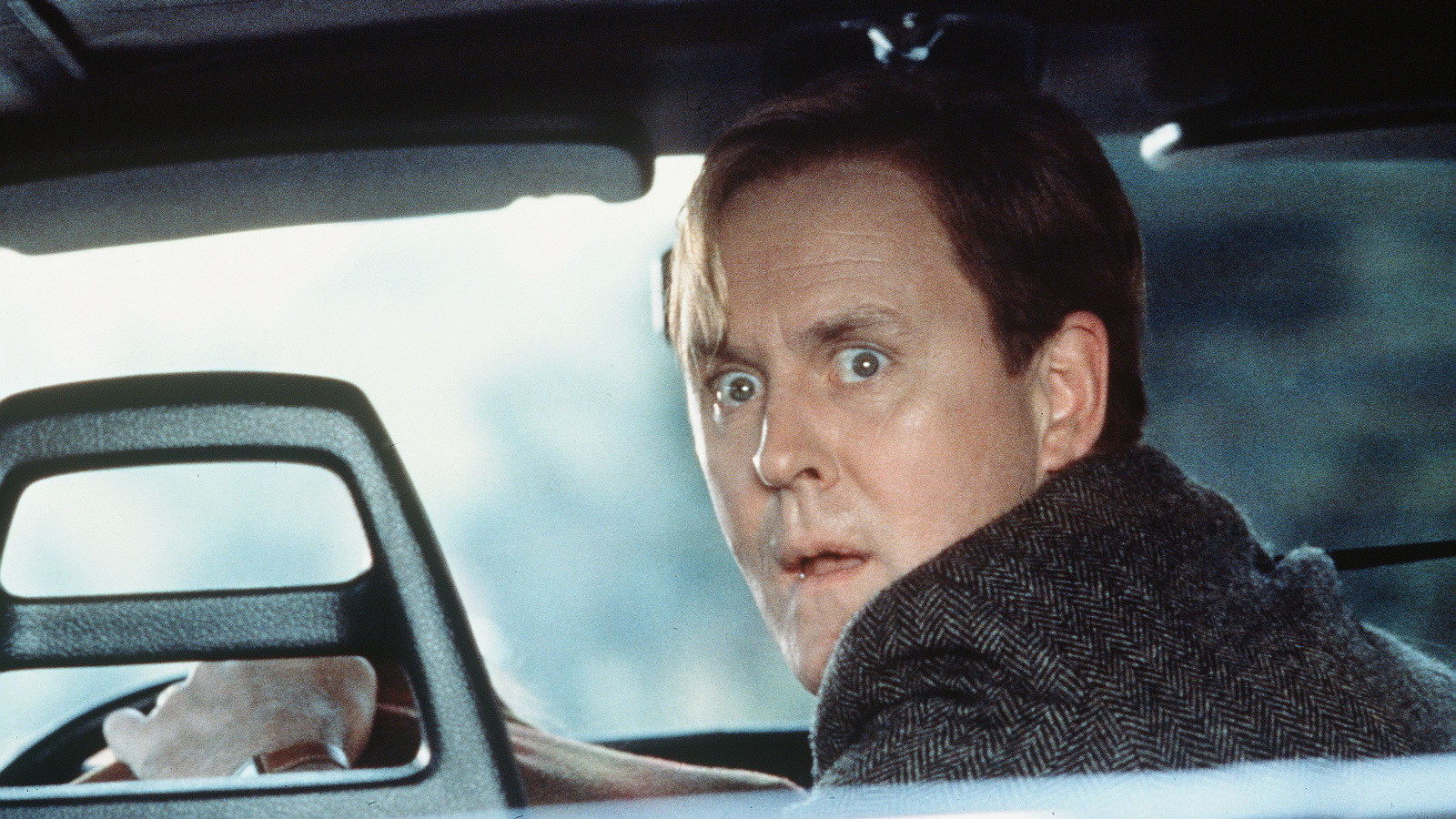 There are different insights in the short interview with a favourite actor, John Lithgow, pictured above, in the Extras of the recent DVD of De Palma’s ultra-Hitchockian, Oedipal Raising Cain. “Down deep, the spine of all his stories is real, almost Bergmanesque neurosis,” Lithgow, who is from a similar elite, intellectual background, observes. “He took his own obsessions, and put them all to work in his storytelling.” In one late, little-seen film, De Palma adapted James Ellroy’s The Black Dahlia. His own Fifties upbringing in a neurotically dysfunctional household, with a dominant, unfaithful father he stalked with a camera and threatened with a knife while his dad’s mistress cowered - briefly glossed in De Palma – is not so unlike the manic, haunted Ellroy. Hitchcock gave him the tools to purge and confess, to slash women and mourn, to kill and cure. With a surgeon’s steely control of his camera, he secretly let it all out.
There are different insights in the short interview with a favourite actor, John Lithgow, pictured above, in the Extras of the recent DVD of De Palma’s ultra-Hitchockian, Oedipal Raising Cain. “Down deep, the spine of all his stories is real, almost Bergmanesque neurosis,” Lithgow, who is from a similar elite, intellectual background, observes. “He took his own obsessions, and put them all to work in his storytelling.” In one late, little-seen film, De Palma adapted James Ellroy’s The Black Dahlia. His own Fifties upbringing in a neurotically dysfunctional household, with a dominant, unfaithful father he stalked with a camera and threatened with a knife while his dad’s mistress cowered - briefly glossed in De Palma – is not so unlike the manic, haunted Ellroy. Hitchcock gave him the tools to purge and confess, to slash women and mourn, to kill and cure. With a surgeon’s steely control of his camera, he secretly let it all out.
rating
Share this article
The future of Arts Journalism
You can stop theartsdesk.com closing!
We urgently need financing to survive. Our fundraising drive has thus far raised £49,000 but we need to reach £100,000 or we will be forced to close. Please contribute here: https://gofund.me/c3f6033d
And if you can forward this information to anyone who might assist, we’d be grateful.

Subscribe to theartsdesk.com
Thank you for continuing to read our work on theartsdesk.com. For unlimited access to every article in its entirety, including our archive of more than 15,000 pieces, we're asking for £5 per month or £40 per year. We feel it's a very good deal, and hope you do too.
To take a subscription now simply click here.
And if you're looking for that extra gift for a friend or family member, why not treat them to a theartsdesk.com gift subscription?
more Film
 Frankenstein review - the Prometheus of the charnel house
Guillermo del Toro is fitfully inspired, but often lost in long-held ambitions
Frankenstein review - the Prometheus of the charnel house
Guillermo del Toro is fitfully inspired, but often lost in long-held ambitions
 London Film Festival 2025 - a Korean masterclass in black comedy and a Camus classic effectively realised
New films from Park Chan-wook, Gianfranco Rosi, François Ozon, Ildikó Enyedi and more
London Film Festival 2025 - a Korean masterclass in black comedy and a Camus classic effectively realised
New films from Park Chan-wook, Gianfranco Rosi, François Ozon, Ildikó Enyedi and more
 After the Hunt review - muddled #MeToo provocation
Julia Roberts excels despite misfiring drama
After the Hunt review - muddled #MeToo provocation
Julia Roberts excels despite misfiring drama
 Ballad of a Small Player review - Colin Farrell's all in as a gambler down on his luck
Conclave director Edward Berger swaps the Vatican for Asia's sin city
Ballad of a Small Player review - Colin Farrell's all in as a gambler down on his luck
Conclave director Edward Berger swaps the Vatican for Asia's sin city
 London Film Festival 2025 - Bradley Cooper channels John Bishop, the Boss goes to Nebraska, and a French pandemic
... not to mention Kristen Stewart's directing debut and a punchy prison drama
London Film Festival 2025 - Bradley Cooper channels John Bishop, the Boss goes to Nebraska, and a French pandemic
... not to mention Kristen Stewart's directing debut and a punchy prison drama
 London Film Festival 2025 - from paranoia in Brazil and Iran, to light relief in New York and Tuscany
'Jay Kelly' disappoints, 'It Was Just an Accident' doesn't
London Film Festival 2025 - from paranoia in Brazil and Iran, to light relief in New York and Tuscany
'Jay Kelly' disappoints, 'It Was Just an Accident' doesn't
 Iron Ladies review - working-class heroines of the Miners' Strike
Documentary salutes the staunch women who fought Thatcher's pit closures
Iron Ladies review - working-class heroines of the Miners' Strike
Documentary salutes the staunch women who fought Thatcher's pit closures
 Blu-ray: The Man in the White Suit
Ealing Studios' prescient black comedy, as sharp as ever
Blu-ray: The Man in the White Suit
Ealing Studios' prescient black comedy, as sharp as ever
 The Woman in Cabin 10 review - Scandi noir meets Agatha Christie on a superyacht
Reason goes overboard on a seagoing mystery thriller
The Woman in Cabin 10 review - Scandi noir meets Agatha Christie on a superyacht
Reason goes overboard on a seagoing mystery thriller
 London Film Festival 2025 - crime, punishment, pop stars and shrinks
Daniel Craig investigates, Jodie Foster speaks French and Colin Farrell has a gambling habit
London Film Festival 2025 - crime, punishment, pop stars and shrinks
Daniel Craig investigates, Jodie Foster speaks French and Colin Farrell has a gambling habit
 I Swear review - taking stock of Tourette's
A sharp and moving tale of cuss-words and tics
I Swear review - taking stock of Tourette's
A sharp and moving tale of cuss-words and tics

Add comment